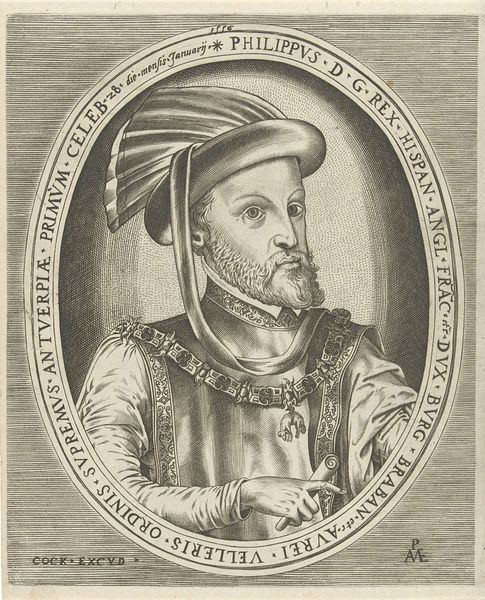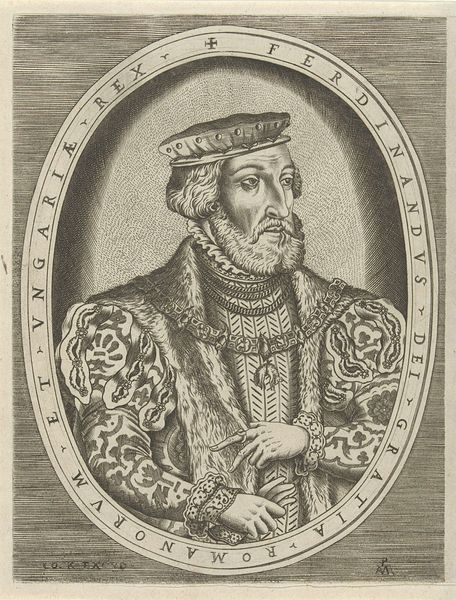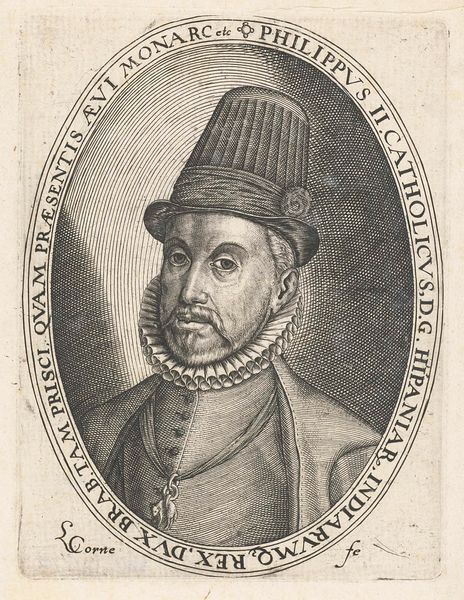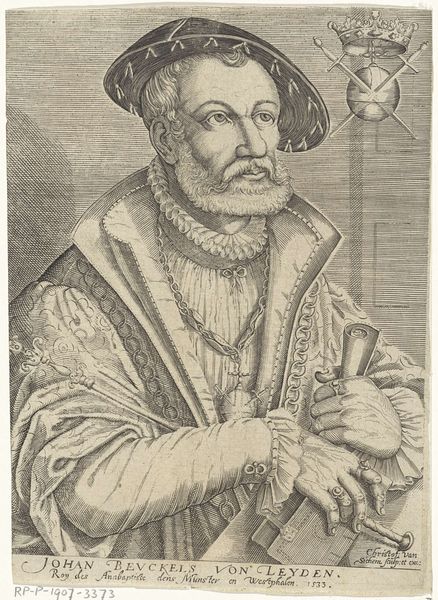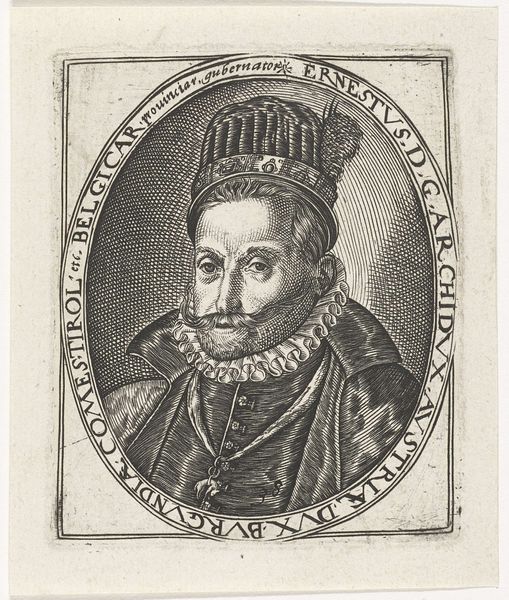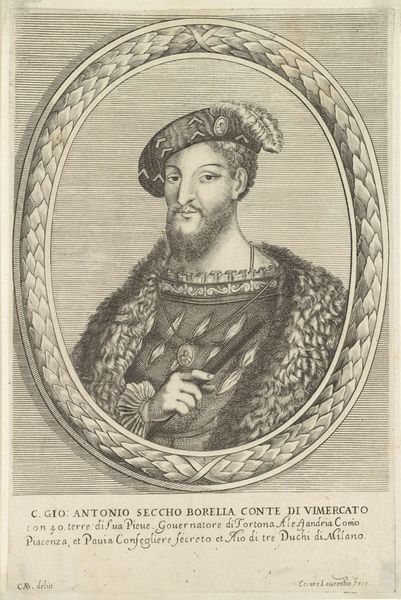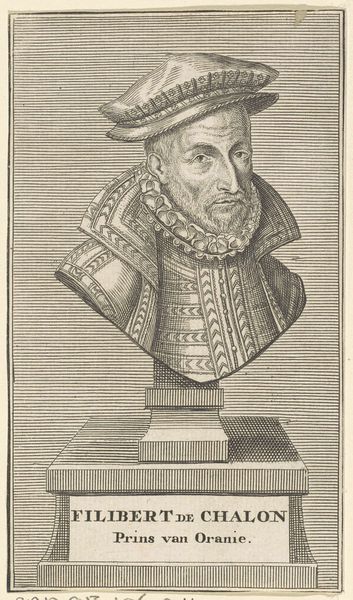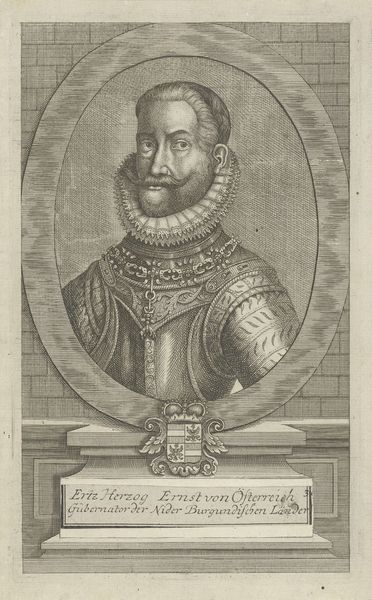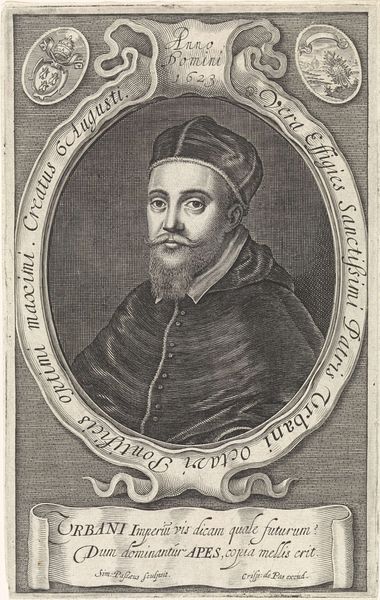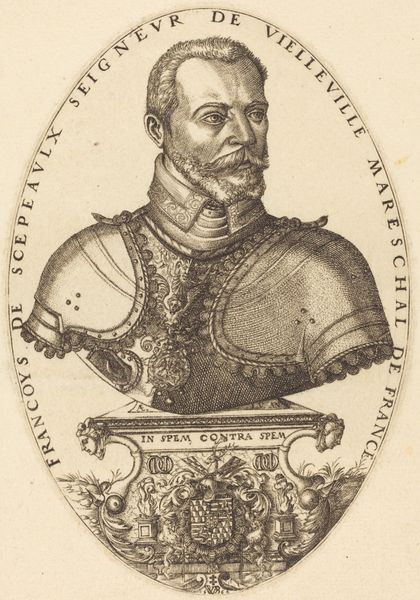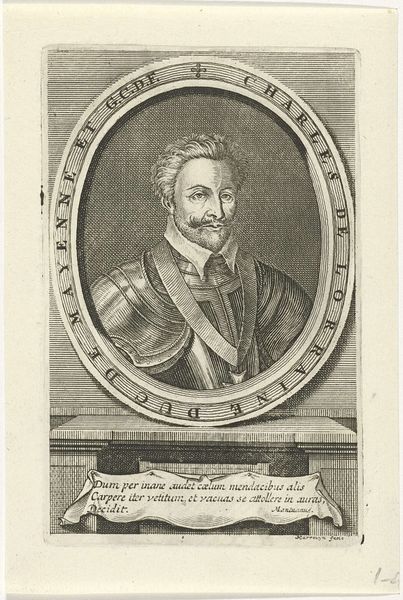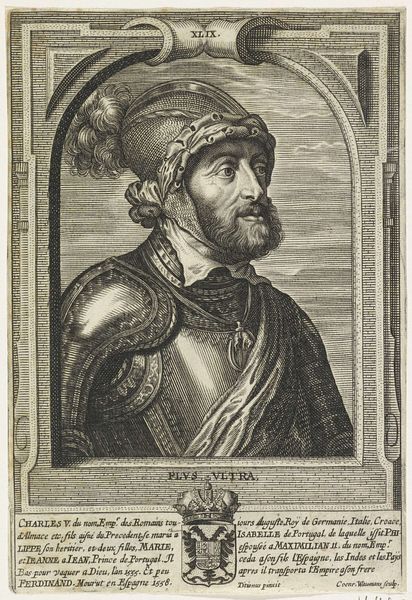
Portret van Emanuel Philibert, hertog van Savoye c. 1540 - 1570
0:00
0:00
metal, engraving
#
portrait
#
metal
#
old engraving style
#
caricature
#
portrait drawing
#
northern-renaissance
#
engraving
Dimensions: height 212 mm, width 172 mm
Copyright: Rijks Museum: Open Domain
Curator: Looking at this work, I'm struck by its almost austere formality. It has a sense of serious self-regard to it. Editor: Indeed. What we see here is a metal engraving, “Portret van Emanuel Philibert, hertog van Savoye”, created sometime between 1540 and 1570. It's attributed to Pieter van der Heyden and currently resides in the Rijksmuseum. The portrait exemplifies the style we recognize from the Northern Renaissance. Curator: The eyes are really commanding aren't they? They communicate such conviction, almost an intensity. I'm intrigued by how the oval border emphasizes the focused, rather resolute, gaze of the Duke. It’s all carefully framed, like an icon presenting a figure for veneration. Editor: Portraits like these served as powerful visual tools. It solidifies and projects power. By visually representing the Duke’s authority, the artist helps to construct a lasting image of leadership. This print would have circulated, carrying those political implications wherever it went. The dog pendant also carries a lot of meaning here: it references a noble belonging to a military order, likely intended to signal devotion and fidelity to the Duke of Burgundy. Curator: That's insightful. I'd also suggest this imagery acts like memory cues; the artifacts that leaders carry are cultural anchors through time. When someone views them now or then, it's meant to elicit particular historical narratives and understandings of legacy. That hat alone suggests authority. Editor: Exactly, it brings his lineage to mind. And note that choice of medium—engraving—a process that creates multiples. This artwork could be dispersed and disseminated widely. His visage was strategically accessible. Curator: Absolutely! Considering the historical contexts you introduced truly reshapes how I view what seems, at first glance, a rather stiff, traditional portrait. Editor: For me, seeing how these images operated within complex socio-political structures highlights how powerful and influential the role of art could be at that time.
Comments
No comments
Be the first to comment and join the conversation on the ultimate creative platform.
